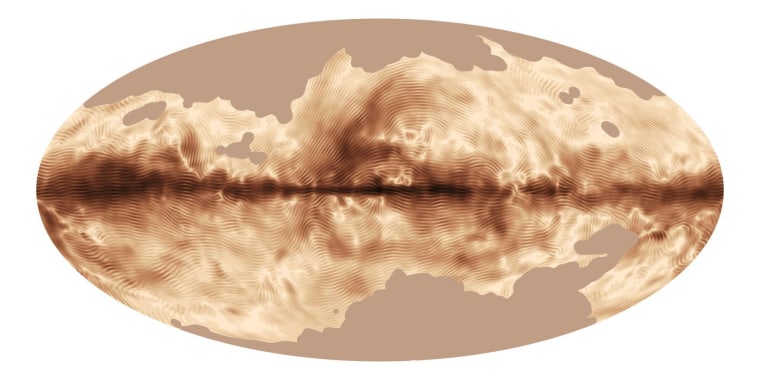Scientists using a European space telescope have created the best map yet of our Milky Way galaxy's magnetic field, a set of cosmic "fingerprints" that may lead to better understanding of how stars form.
The magnetic map of the Milky Way was stitched together from data collected by the European Space Agency's Planck space observatory. The Planck map shows how specially oriented polarized light is emitted from interstellar dust.
"This is the best picture we've ever had of the magnetic field of the Milky Way over such a large part of the sky," Charles Lawrence, the U.S. Planck project scientist at NASA's Jet Propulsion Laboratory in California, said in a statement.

Traveling as waves in electric and magnetic fields, light vibrates in directions at right angles to the direction it travels. In most cases, the fields vibrate in all directions. However, if something affects the light and causes it to vibrate preferentially in certain directions, it becomes polarized.
In space, light emitted by gas, dust, and stars can be polarized. Spinning dust particles in clouds can become aligned with magnetic fields, creating polarization that can be measured.
The new image from Planck reveals the large-scale organization of the polarization of the galaxy. Swirls, loops, and arcs, like giant fingerprints, trace the structure of the magnetic fields in the Milky Way, which results from the field lines running predominantly parallel to the galactic plane. Darker regions correspond to stronger polarization, with striations indicating the direction of the magnetic field on the plane of the sky.
The image also reveals variations in polarization by nearby objects, such as clouds of gas and dust.
Planck's study of the galactic polarization is analyzed in four papers recently submitted to the journal Astronomy & Astrophysics.
— Nola Taylor Redd, Space.com
This is a condensed version of a report from Space.com. Read the full report. Follow Space.com on Twitter, Facebook and Google+.